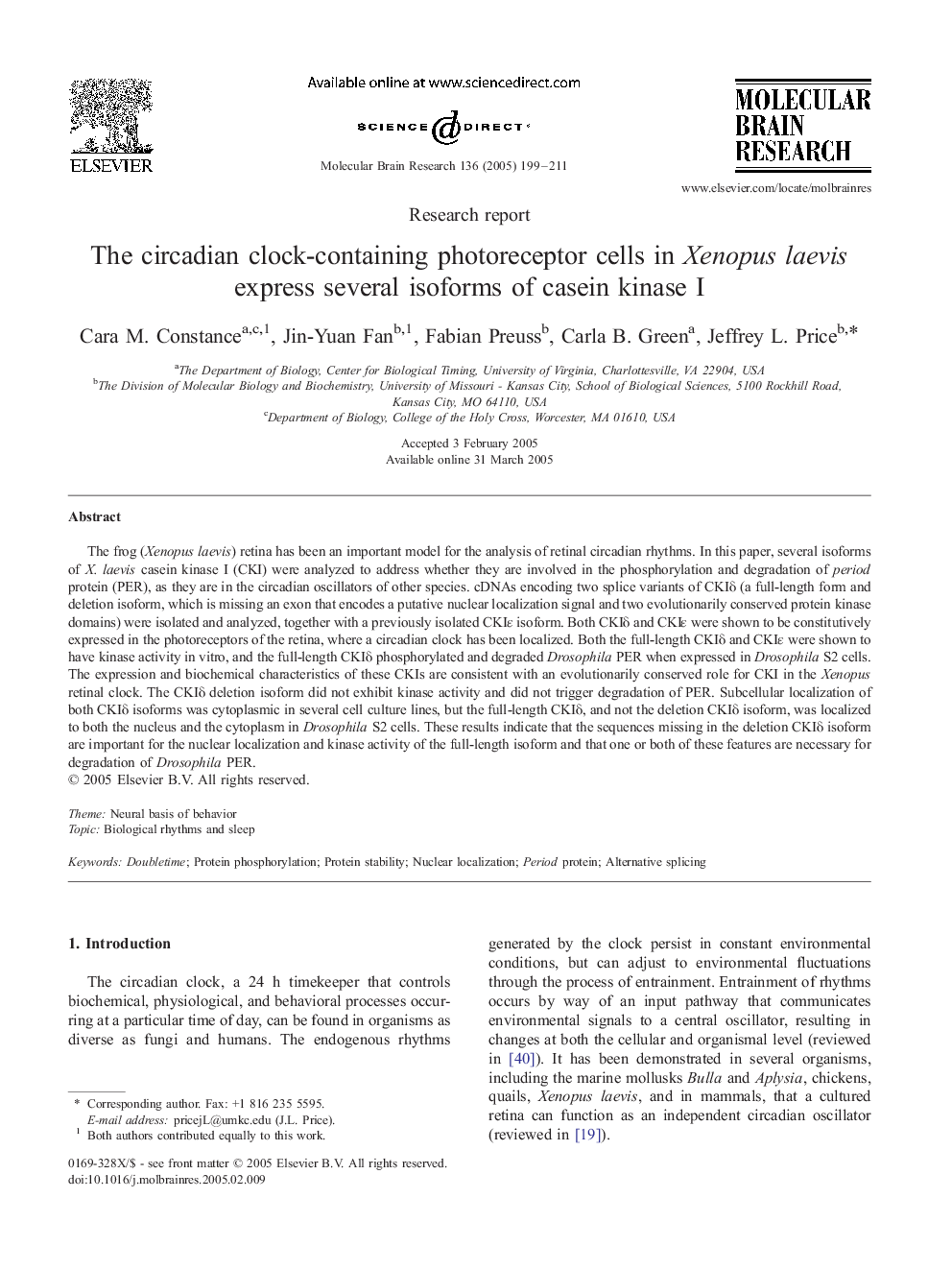| Article ID | Journal | Published Year | Pages | File Type |
|---|---|---|---|---|
| 9410933 | Molecular Brain Research | 2005 | 13 Pages |
Abstract
The frog (Xenopus laevis) retina has been an important model for the analysis of retinal circadian rhythms. In this paper, several isoforms of X. laevis casein kinase I (CKI) were analyzed to address whether they are involved in the phosphorylation and degradation of period protein (PER), as they are in the circadian oscillators of other species. cDNAs encoding two splice variants of CKIδ (a full-length form and deletion isoform, which is missing an exon that encodes a putative nuclear localization signal and two evolutionarily conserved protein kinase domains) were isolated and analyzed, together with a previously isolated CKIε isoform. Both CKIδ and CKIε were shown to be constitutively expressed in the photoreceptors of the retina, where a circadian clock has been localized. Both the full-length CKIδ and CKIε were shown to have kinase activity in vitro, and the full-length CKIδ phosphorylated and degraded Drosophila PER when expressed in Drosophila S2 cells. The expression and biochemical characteristics of these CKIs are consistent with an evolutionarily conserved role for CKI in the Xenopus retinal clock. The CKIδ deletion isoform did not exhibit kinase activity and did not trigger degradation of PER. Subcellular localization of both CKIδ isoforms was cytoplasmic in several cell culture lines, but the full-length CKIδ, and not the deletion CKIδ isoform, was localized to both the nucleus and the cytoplasm in Drosophila S2 cells. These results indicate that the sequences missing in the deletion CKIδ isoform are important for the nuclear localization and kinase activity of the full-length isoform and that one or both of these features are necessary for degradation of Drosophila PER.
Keywords
Related Topics
Life Sciences
Neuroscience
Cellular and Molecular Neuroscience
Authors
Cara M. Constance, Jin-Yuan Fan, Fabian Preuss, Carla B. Green, Jeffrey L. Price,
